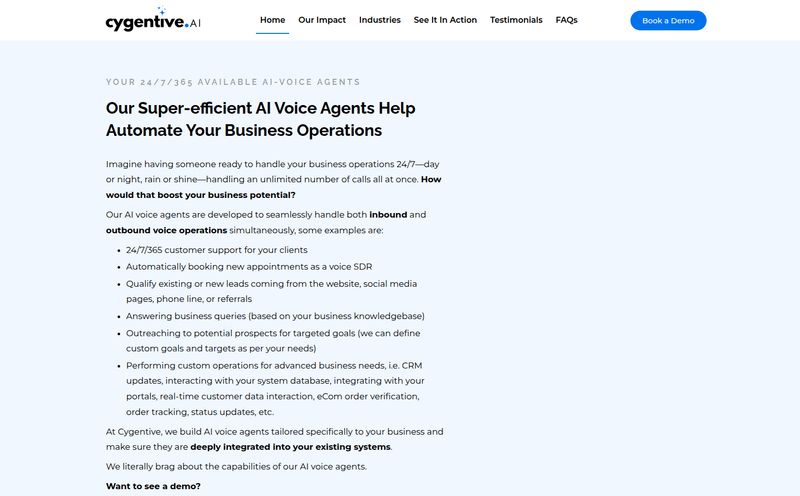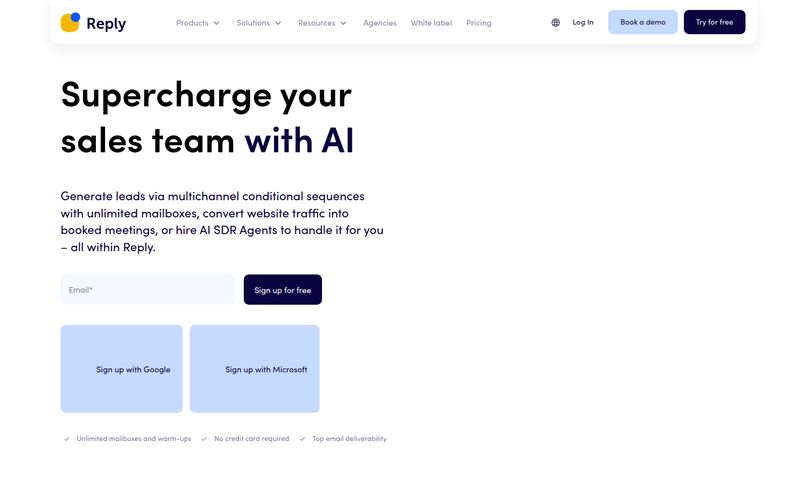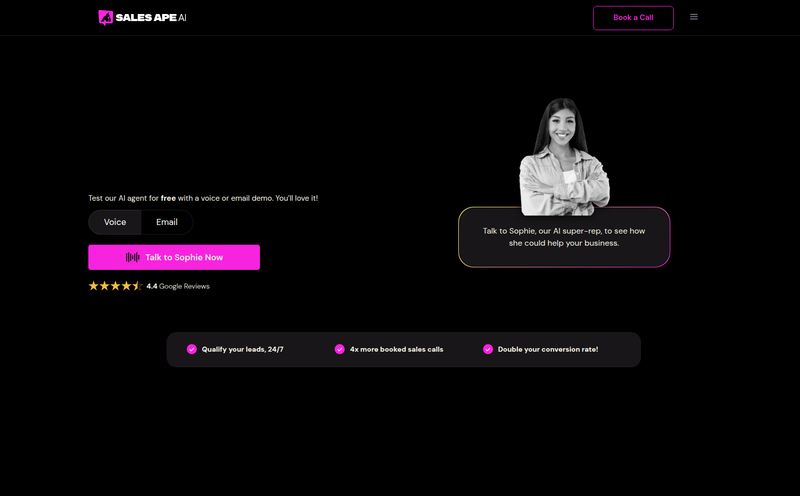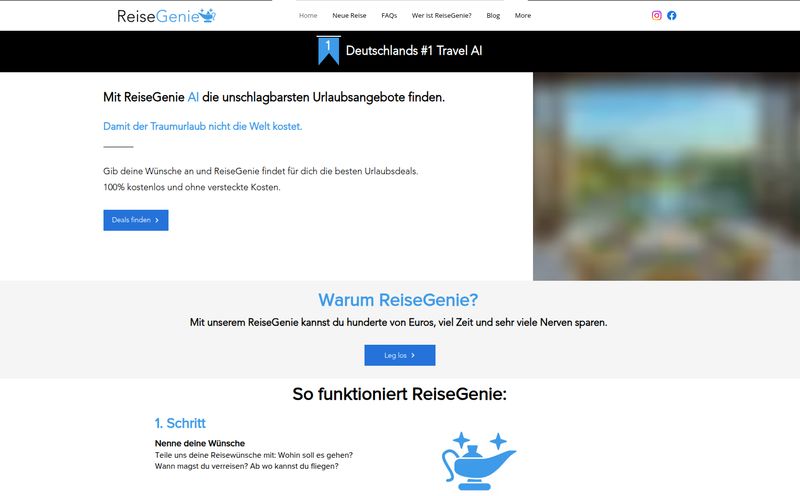If you're a developer, the term "AppSec scan" probably makes you sigh. If you're in security, it means wading through a mountain of alerts, trying to find the real threats buried under an avalanche of false positives. It's a noisy, time-consuming, and often frustrating process for everyone involved. For years, we've just accepted it as the cost of doing business securely. A necessary evil.
But what if it didn't have to be? I've been in the SEO and traffic game for a long time, and I've seen countless tools promise to 'revolutionize' our workflows. Most of them are just a new coat of paint on an old engine. So when I stumbled upon a platform literally named Qwiet AI, my curiosity was piqued. The name itself is a bold promise: to bring some much-needed quiet to the chaos of application security. But does it deliver, or is it just more noise?
So, What's the Big Idea Behind Qwiet AI?
At its heart, Qwiet AI is an application security platform designed to analyze your code, find vulnerabilities, and help you fix them. Okay, nothing new there. But the how is where it gets interesting. Instead of just running a traditional static analysis (SAST) tool and dumping a PDF on your desk, Qwiet uses what they call "AppSec AI Agents."
Think of it like this: A traditional scanner is like a spell-checker that flags every weirdly spelled word in a fantasy novel, including all the made-up names. It's technically not wrong, but it's not very helpful. Qwiet AI, on the other hand, is like having a seasoned editor who not only understands the language but also the context of the world you're building. It doesn't just flag problems; it understands them and suggests coherent, meaningful fixes.
The platform rolls a few critical security functions into one cohesive workflow: SAST, Software Composition Analysis (SCA) for your open-source dependencies, and even secrets detection. It's built to give you a complete picture in a single, speedy scan.
The Features That Actually Matter to a Dev Team
A feature list is just a list until you see how it impacts your daily grind. I’ve seen enough to know that it’s not about having the most features, but the right ones. Qwiet seems to get this.
Agentic AI SAST and the Magic of the AutoFix
This is the main event. Qwiet's big claim is a 97% true positive rate. That’s an almost unbelievably high number in the world of SAST. The secret sauce is their "agentic" AI. It's not just pattern matching; it's building a model of your code—they call it a Code Property Graph—to understand the logic and data flow. This is how it supposedly weeds out the false positives that drive developers nuts.
But finding a real vulnerability is only half the battle. The real time-sink is fixing it. This is where the AI AutoFix comes in. Qwiet doesn’t just tell you “you have a cross-site scripting vulnerability on line 42.” It provides a verified code snippet that you can use to patch the hole right away. That's a massive leap forward. One of their customer testimonials mentioned cutting remediation time from 21 days down to 2. That’s not just an improvement; that’s a total change in how a team operates.
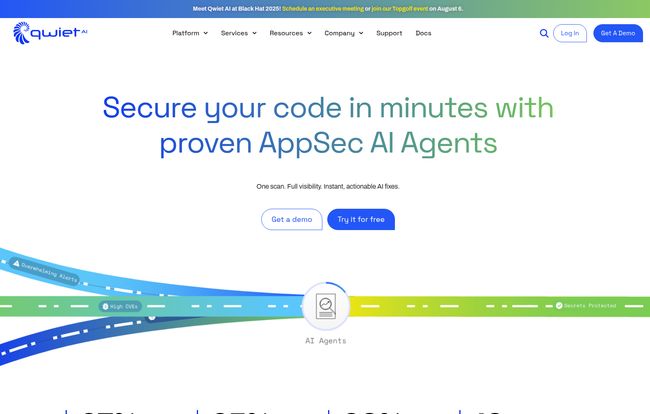
Visit Qwiet AI
Beyond Your Code: SCA, SBOM, and Containers
Modern applications are rarely built from scratch. They're assembled from countless open-source libraries and dependencies. Qwiet's Intelligent SCA tackles this by scanning those dependencies for known vulnerabilities. It’s security for the code you didn't even write.
It also generates a Software Bill of Materials (SBOM), which is basically an ingredients list for your application. This is quickly moving from a 'nice-to-have' to a 'must-have' for compliance and enterprise-level security hygiene. They’ve also got Container Security, making it a pretty well-rounded suite for a modern cloud-native environment. It shows they're thinking about the whole development ecosystem, not just a single file of code.
Speed That Doesn't Break Your Build
Here's a truth every developer knows: if the security scan takes an hour, it's going to be skipped. Security has to work at the speed of development, not against it. Qwiet AI claims their scans are fast enough to integrate directly into your CI/CD pipeline without causing a massive bottleneck.
This is crucial. Security can't be a gate that everything has to stop and wait for. It needs to be a guardrail, keeping you on the road while you maintain your speed. By fitting into the existing Software Development Life Cycle (SDLC), it becomes a part of the natural flow of work. This is how you get developers to actually embrace security, instead of seeing it as a chore handed down from another department.
The Million-Dollar Question: What Does Qwiet AI Cost?
And now, for the part everyone's scrolling to find. The pricing. I scoured their site, and the answer is... you have to ask them. There's no public pricing page. The call to action is to "Get a Demo."
Look, I get it. As a SaaS enthusiast, I know this is standard practice for enterprise-focused tools. Pricing is often tailored based on the number of developers, the scale of applications, and the specific features you need. It's not a one-size-fits-all product. But as a potential user, it can be a little frustrating. It usually means it’s not priced for the solo developer or a tiny startup. It’s an investment for teams that feel the pain of security debt on a larger scale.
My Honest Take: Is It Worth Booking That Demo?
So, cutting through the marketing buzz, what’s my final verdict? I am, I've gotta say, genuinely impressed with the proposition. For years, the AppSec space has been a race to find more stuff, leading to more noise. Qwiet’s focus on accuracy—on finding less, but more important stuff—is the right direction.
The real home run here is the combination of a high true-positive rate with the AI AutoFix. This combo doesn't just make security easier; it fundamentally reduces developer toil. It turns the security scan from a problem-finding exercise into a problem-solving one. When you think about the cost of developer hours spent hunting down and fixing vulnerabilities, a tool like this could pay for itself very quickly.
Sure, the lack of public pricing is a hurdle, and there will inevitably be some configuration to get it slotted into your workflow perfectly. But for any medium to large organization that is serious about shifting security left and empowering developers, Qwiet AI looks like one of the most promising players I've seen in a while. The social proof from companies like Cisco and Blackstone isn't just window dressing; it tells you this is a tool built for serious work.
Frequently Asked Questions about Qwiet AI
What is Qwiet AI's main advantage over traditional SAST tools?
The key differentiator is its incredible accuracy and focus on reducing noise. With a claimed 97% true positive rate and AI-powered, verified code fixes, it aims to eliminate the false positives and time-consuming remediation that plague traditional tools.
Does Qwiet AI replace the need for a security team?
Absolutely not. It's a force multiplier. It empowers a security team by automating the tedious parts of their job, allowing them to focus on more complex architectural threats and security strategy instead of chasing down low-level code flaws.
How does Qwiet AI fit into a developer's workflow?
It's designed for seamless integration into the CI/CD pipeline. The scans are fast enough to run automatically with every build or pull request, providing immediate feedback directly within the tools developers already use.
Is Qwiet AI suitable for small businesses or individual developers?
Given its enterprise-level features and demo-based pricing model, it's likely targeted more towards mid-sized to large organizations. Smaller teams might not have the scale of teh problem that justifies this kind of investment, but it never hurts to ask for a demo.
What is an SBOM and why does Qwiet AI include it?
An SBOM is a Software Bill of Materials—a complete inventory of all the components and libraries in your software. It's becoming a critical piece of security and compliance, and including it shows Qwiet AI provides a comprehensive view of your application's attack surface.
How exactly does the AI AutoFix feature work?
Instead of just flagging an issue, the AI analyzes the vulnerability in the context of your code and generates a ready-to-use, verified code suggestion to fix it. This dramatically speeds up remediation by removing the guesswork for developers.
Bringing a Little Peace and Qwiet to AppSec
In a field that's gotten progressively louder and more complex, Qwiet AI's approach feels like a breath of fresh air. It’s not about adding more alerts, more dashboards, or more complexity. It's about delivering targeted, accurate, and actionable results that let developers get back to what they do best: building great software. While AI is the buzzword of teh decade, this feels like a genuinely smart application of it—one that solves a real, nagging problem. If you're tired of teh noise, it might just be time to give 'qwiet' a try.
